On 29 November, 1948, the first Holden motor car was unveiled at General Motors Holden (GMH). The launch of the Holden was a watershed moment for the nation: it represented the first time a motor vehicle had been wholly built in Australia.
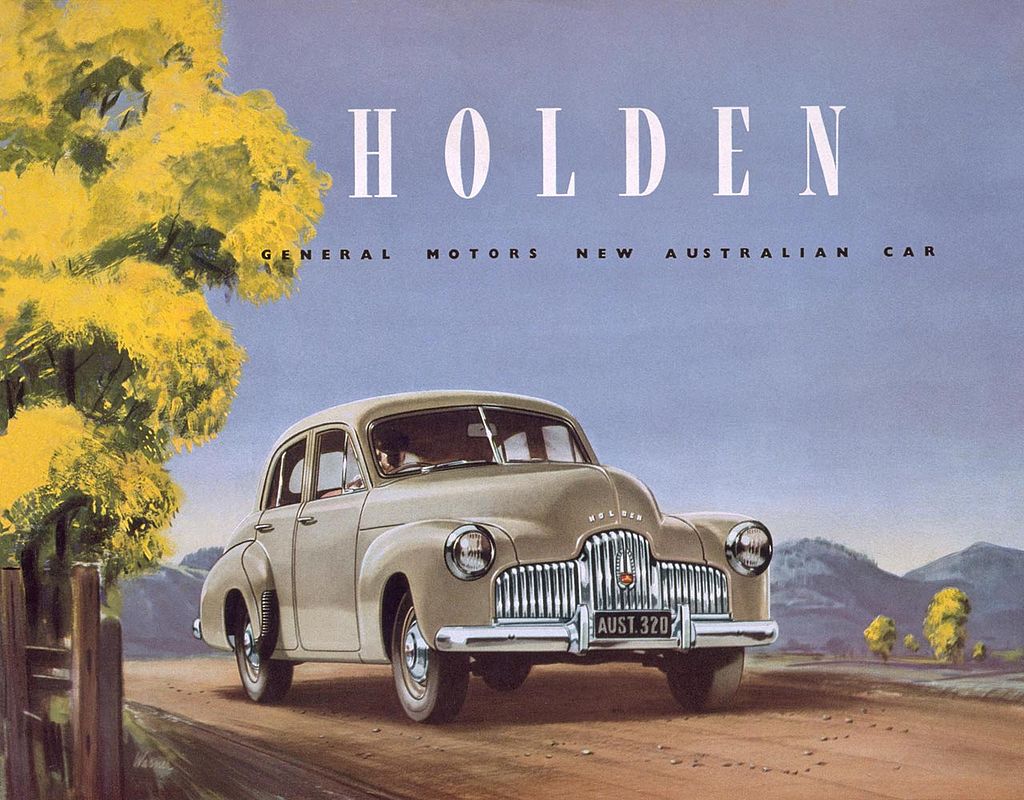 Front cover of the sales brochure for the Holden 48-215 by GM Holden, 1948. Sourced from Wikimedia Commons
Front cover of the sales brochure for the Holden 48-215 by GM Holden, 1948. Sourced from Wikimedia Commons
‘Australia’s own car’ was given a ‘Hollywood-style’ welcome, with flowers, an orchestra, and lots of press. Prime minister Ben Chifley congratulated GMH on its ‘great initiative and enterprise,’ and paid tribute to the ‘humble workers … without whom the new car would have been impossible.’ (Age, 30 November 1948, p 3)
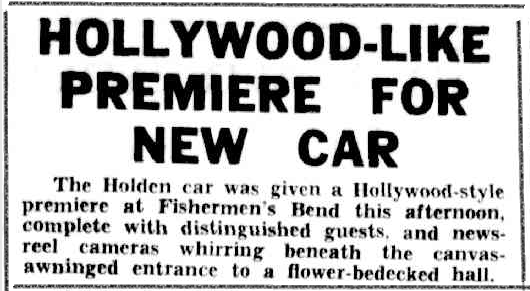 Herald, 29 November 1948, p 7
Herald, 29 November 1948, p 7
The 48-215 Holden was a 6-cylinder, 5-6 passenger sedan with a rear luggage boot and a capacity to travel up to 80.5 miles per hour. It was said that the secret to the car’s superior performance was its weight – a relatively light 2247lb. 1
The price of the car was £675, or a total of around £760 with the addition of on-road costs.
 Holden car by the side of the road, [ca. 1950 – ca. 1959]. Photo by Hans Bonney; H2009.50/15
Holden car by the side of the road, [ca. 1950 – ca. 1959]. Photo by Hans Bonney; H2009.50/15
The bodies of the Holden were built at Woodville, in South Australia, before being sent to Victoria, where they were assembled at GMH’s factory at Fishermen’s Bend. The metals used in the engine were all produced in Australia, and the upholstery was made from woollen cloth. (Australian Worker, 8 September 1948, p 6)
Whilst Australians were used to driving cars designed overseas, the 48-215, or FX as it became affectionately known as, was especially designed for Australia’s rugged conditions.
 The Holden at an Australian sheep run, [ca. 1948]. Photo by Athol Shmith; H2004.101/1
The Holden at an Australian sheep run, [ca. 1948]. Photo by Athol Shmith; H2004.101/1
Production for the cars began at 10 cars per day, with the aim of producing 20,000 cars per annum. The Holden car was a massive hit, with the waiting list for a brand new Holden blowing out to 40,000 cars, or a whole two years of production. 2
By the mid 1950s, the Holden was well on its way to becoming a cultural icon, and many of its cars remain household names today. You can see a few of them below.
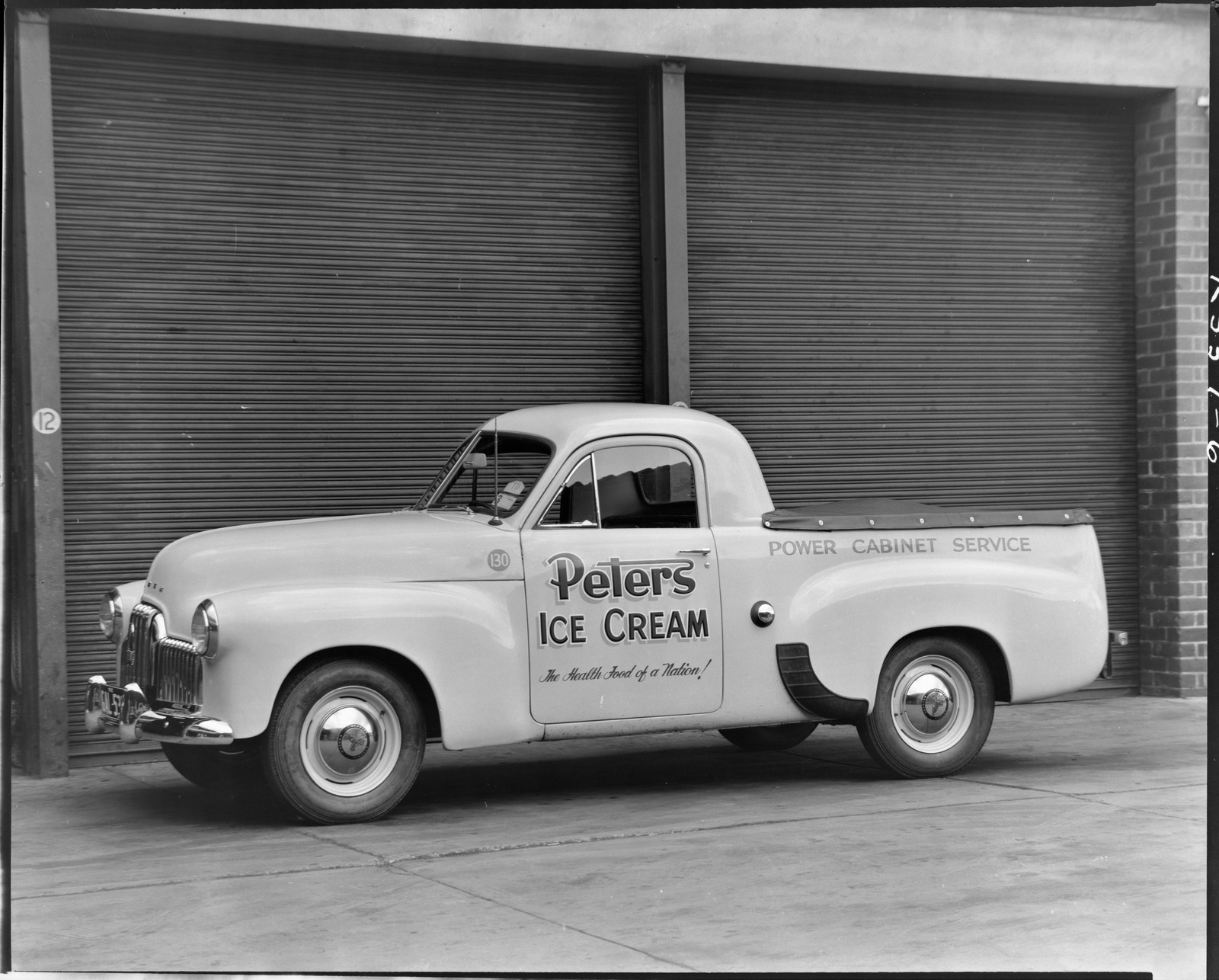 Peters Ice Cream Holden utility vehicle; [ca. 1953]. Photo by Lyle Fowler, Harold Paynting collection, K series; H92.20/4517
Peters Ice Cream Holden utility vehicle; [ca. 1953]. Photo by Lyle Fowler, Harold Paynting collection, K series; H92.20/4517
 Two men drinking Castlemaine Bitter Ale, sitting at the back of a Holden Kingswood. Photo by Rennie Ellis. This work is in copyright; H2012.140/522
Two men drinking Castlemaine Bitter Ale, sitting at the back of a Holden Kingswood. Photo by Rennie Ellis. This work is in copyright; H2012.140/522
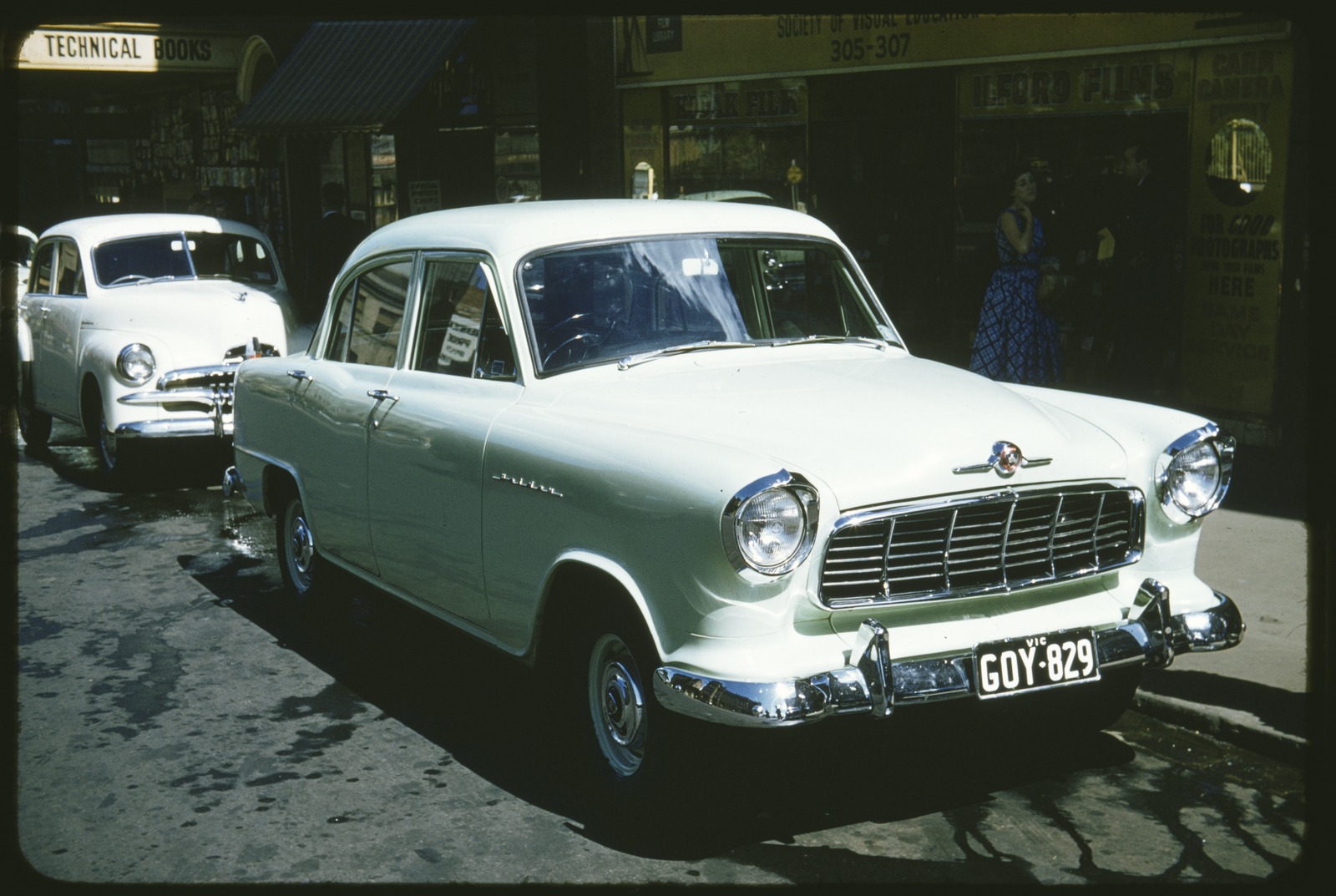 Australian car new Holden old behind, 1954. Photo by Allen Kelso; H2015.58/21
Australian car new Holden old behind, 1954. Photo by Allen Kelso; H2015.58/21
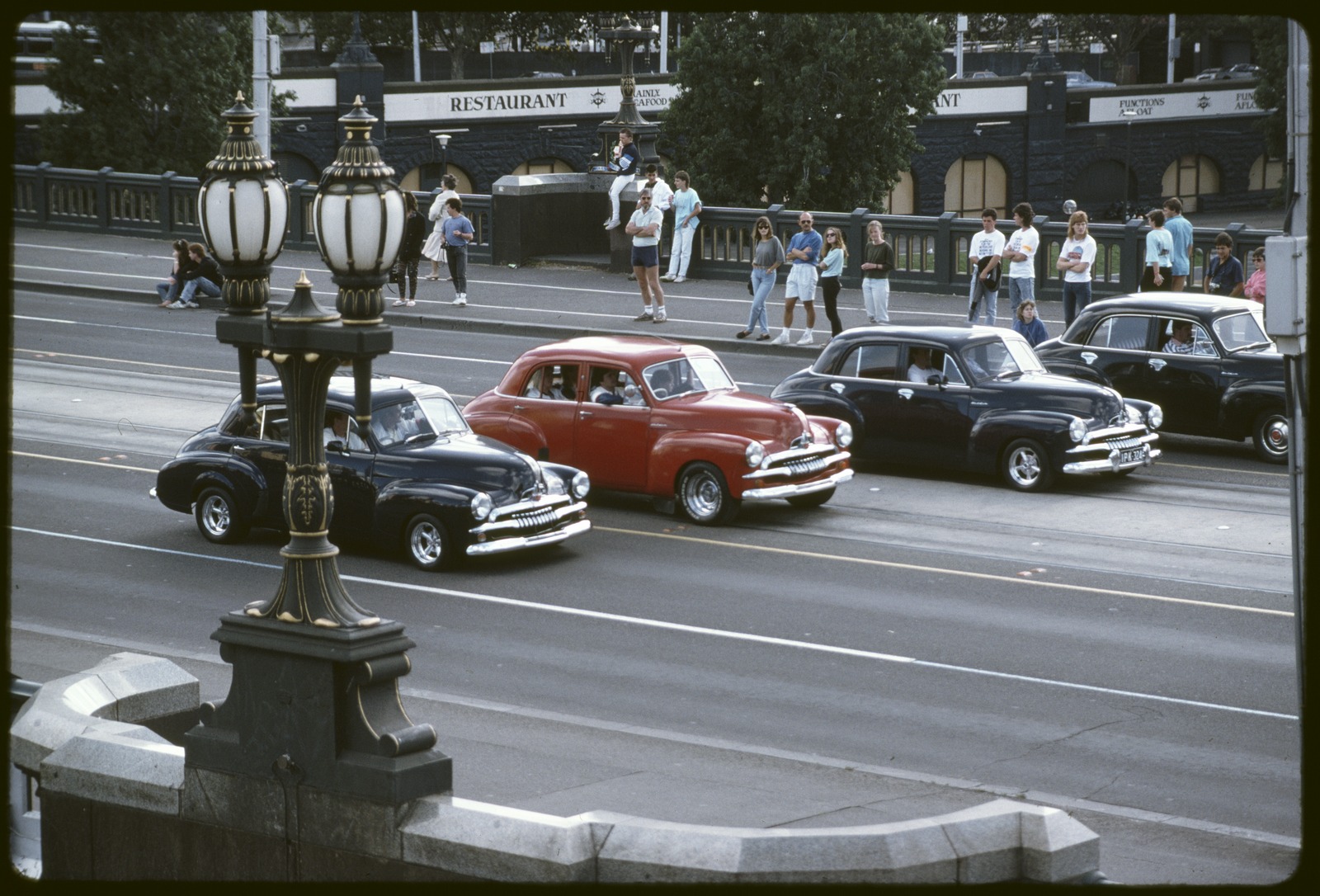 FJ Holden cars crossing Princes Bridge, Melbourne, 1989. Photo by Rennie Ellis. This work is in copyright; H2011.150/3436
FJ Holden cars crossing Princes Bridge, Melbourne, 1989. Photo by Rennie Ellis. This work is in copyright; H2011.150/3436
Further reading
Birney, Shane, 1985, Australia’s own: the history of Holden, Golden Press, Sydney, NSW
Hagon, Toby & Hagon, Will, 2016, Holden : our car 1856-2017, Macmillan by Pan Macmillan Australia, Sydney, NSW
Kurmelovs, Royce, 2016, The death of Holden : the end of an Australian dream, Hachette Australia, Sydney, NSW
Wakely, Joel, 2017, The passion for Holden: a celebration of the classic Australian marque in 48 cars, Woodslane Press, Warriewood, N.S.W

